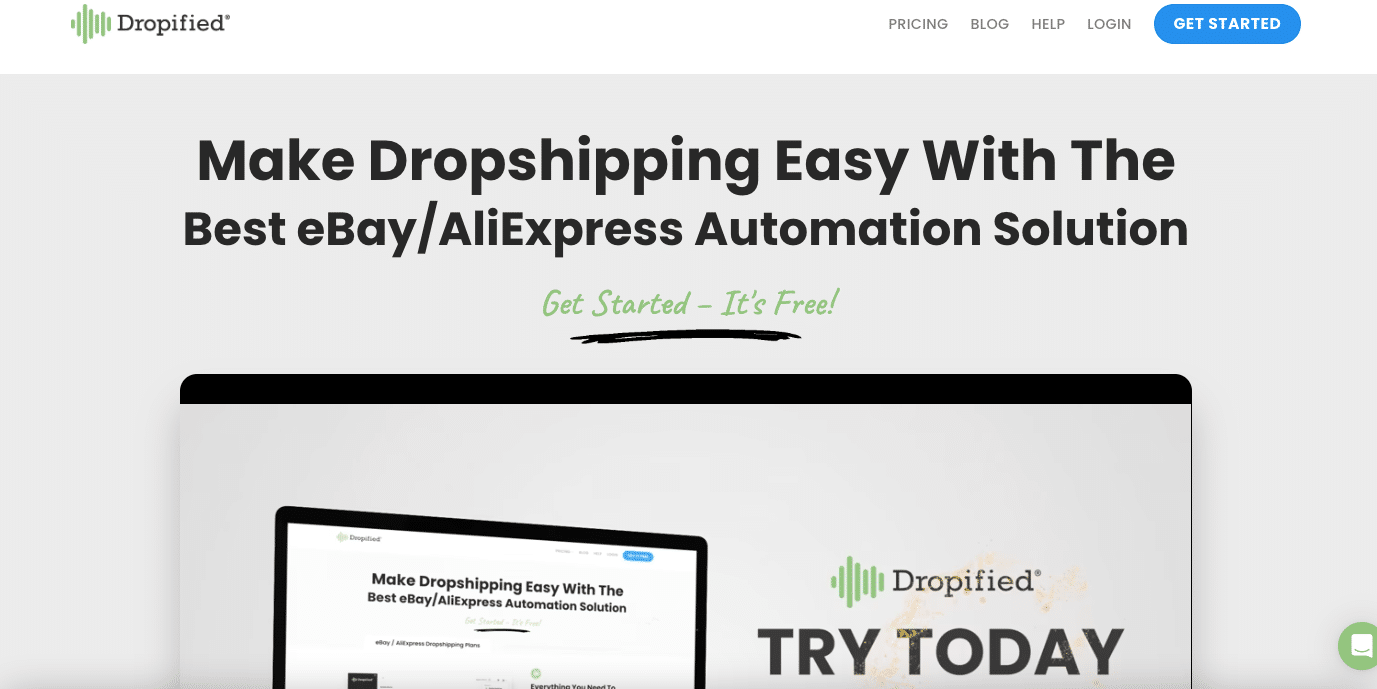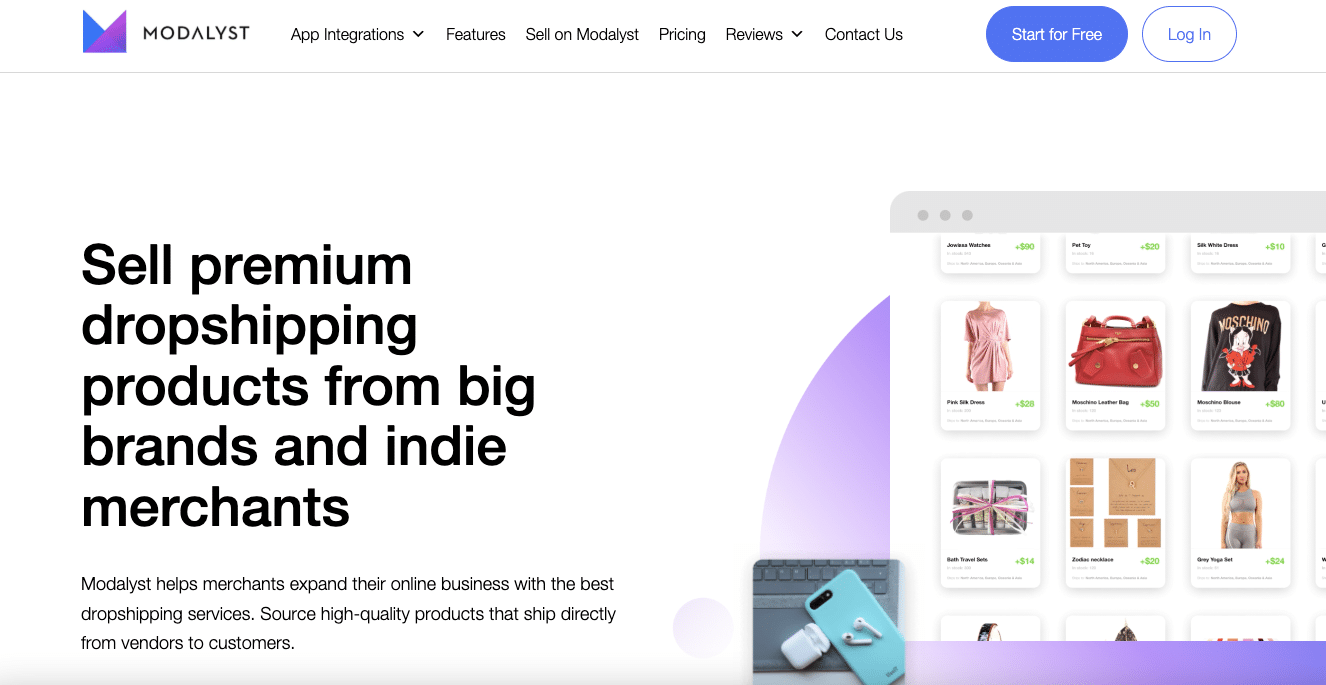Top 10 Essential Dropshipping Software for Successful Online Stores in 2025
Contents

In today’s rapidly evolving e-commerce landscape, having the right dropshipping software can be the game-changer that sets your online store apart.
Dropshipping software simplifies inventory management, order processing, and supplier integration, enabling store owners to focus on marketing and customer satisfaction.
Whether you’re a seasoned e-commerce entrepreneur or a newcomer to the dropshipping world, choosing the right software is essential for scaling and sustaining a successful online store.
We explored the top dropshipping tools and software and compiled this comprehensive guide that identified (from our expert analysis) the top ten dropshipping software.
Key Takeaways
- Why you should use dropshipping software to automate your online store
- Key features of good dropshipping software
- How to pick the right software for your online business
- The top 10 dropshipping tools
What is Dropshipping Software?

Dropshipping software refers to tools designed to streamline the dropshipping process by automating key aspects such as product sourcing, inventory management, order fulfillment, and supplier communication.
These platforms often integrate directly with e-commerce websites and marketplaces, making it easy to import products, track orders, and keep inventory up to date in real-time. Dropshipping software bridges the retailer and suppliers, ensuring seamless operations and better customer experiences.
Benefits of Using Dropshipping Software
- Automation of Processes
Dropshipping software automates tasks like order placement, tracking, and inventory updates, saving time and reducing human errors. - Efficient Inventory Management
Real-time inventory syncing ensures that your online store reflects current stock levels, reducing the risk of overselling or stockouts. - Product Sourcing Made Simple
Many dropshipping platforms offer vast product catalogs or integrations with major suppliers, simplifying product sourcing. - Time and Cost Savings
Automating repetitive and manual tasks allows you to focus on growth strategies, marketing, and customer service. - Improved Order Tracking and Fulfillment
Integrated order tracking helps keep customers informed about their purchases, enhancing their shopping experience and boosting trust.
Key Features of Dropshipping Software

Choosing the right dropshipping software is crucial if you are looking to streamline your operations and enhance your bottom line.
Here are the key features to look for when selecting dropshipping software:
1. Supplier Integration & Automation
One of the most important features is seamless integration with various suppliers. Good software should automate order placement, inventory syncing, and tracking updates to minimize manual intervention. This automation ensures that orders are processed quickly and accurately, enhancing customer satisfaction.
2. Product Sourcing Tools
It is crucial to source dropshipping products from a vast network of suppliers easily. Look for software that offers a large catalog of products or connects with popular marketplaces like AliExpress, Amazon, or local suppliers in the U.S. and Europe. Advanced sourcing features like trend analysis, niche product discovery, and price comparison can give you a competitive edge.
3. Real-Time Inventory Management
Automated dropshipping software will sync inventory levels in real-time across multiple platforms and prevent overselling and stockouts. This feature is especially important during peak shopping seasons when inventory fluctuates rapidly.
4. Automated Order Processing
Automated dropshipping tools such as order processing help ensure a customer’s order is automatically forwarded to the supplier for fulfillment. This feature eliminates delays and human errors and saves time while enhancing operational efficiency and customer experience.
5. Multi-Channel Support
The best dropshipping software allows integration with various e-commerce platforms such as Shopify, WooCommerce, BigCommerce, Amazon, and eBay. Multi-channel support enables you to manage all your sales channels from one central dashboard, reducing the complexity of managing multiple stores.
6. User-Friendly Interface
An intuitive and easy-to-navigate interface is essential for quick onboarding and smooth daily operations. Automation software should have a clean, well-organized dashboard with clear navigation, making it easy for users to manage their online stores even with minimal technical skills.
7. Analytics and Reporting Tools
Comprehensive analytics and reporting tools provide insights into sales performance, customer behavior, and inventory trends. This data helps make informed decisions, optimize product listings, and improve marketing strategies to maximize profits.
8. Customizable Pricing and Markup Rules
Look for software that allows you to mine product data, set custom pricing rules, automate markups, and apply discounts based on your profit margins. This flexibility ensures that your pricing strategy remains competitive without compromising profitability.
9. Customer Support and Training Resources
Reliable customer support is essential, especially for beginners. Choose software that offers 24/7 support through various channels like live chat, email, or phone. Access to training resources, tutorials, and a knowledge base can also be invaluable.
10. Scalability
As your business grows, your software should be able to scale with you. Ensure that the platform offers features suitable for small businesses and large enterprises, with options for upgrading as your needs evolve.
10 Best Dropshipping Software for a New Dropshipping Business
1. Sell The Trend

Sell The Trend is an all-in-one platform offering product research, automation, and supplier integration. Its AI-driven algorithm helps users identify trending products, making it a favorite among new and experienced dropshippers.
Key Features:
- Nexus Research Tool: Identifies trending products with high sales potential.
- One-Click Product Import: Easily import products into Shopify or WooCommerce stores.
- Automated Order Fulfillment: Orders are automatically forwarded to suppliers for quick processing.
- Integrated Video Ad Creation: Simplifies ad creation for social media campaigns.
Cons:
- Many options to select from, which might be a bit confusing to a new dropshipping business
2. DSers

DSers is a robust alternative to Oberlo, offering bulk order placement and advanced supplier management. It’s particularly suited for high-volume sellers.
Key Features:
- Bulk Order Processing: Place multiple orders with a single click.
- Supplier Optimization: Easily switch between suppliers for the best price.
- Integration with AliExpress: Deep integration for seamless order management.
- Multiple E-commerce Platform Support: Works with Shopify, WooCommerce, and more.
Cons:
- Focused mainly on AliExpress, limiting supplier diversity.
- Slightly complex for beginners.
3. Spocket

The Spocket app focuses on sourcing high-quality dropshipping products from multiple reliable suppliers in the U.S. and Europe, making it ideal for dropshippers targeting these markets.
Key Features:
- U.S. and EU-Based Suppliers: Faster shipping times and high-quality products.
- Branded Invoices: Helps enhance brand identity with personalized invoices.
- Real-Time Inventory Syncing: Keeps your stock levels up to date.
- One-Click Import: Easily add products to your store.
Cons:
- Higher subscription fees compared to other tools.
- Limited supplier network for non-U.S./EU markets.
4. Dropified

Dropified is known for its extensive automation tool features and wide supplier network, making it suitable for both beginners and experienced dropshippers.
Key Features:
- Multi-Platform Support: Compatible with Shopify, WooCommerce, and BigCommerce.
- Automated Product Importing: Quick product listing from multiple suppliers.
- Order Fulfillment Automation: Hands-free order processing.
- Advanced Profit Tracking: Detailed analytics for better decision-making.
Cons:
- Steeper learning curve for a beginner or dropshipping business
- Higher cost for premium features.
5. AliDropship

AliDropship offers a one-time purchase plugin for WooCommerce, eliminating recurring subscription costs. It’s tailored for AliExpress dropshipping marketplace.
Key Features:
- One-Time Purchase Fee: No recurring subscription costs.
- Complete Automation: Product importing, pricing updates, and order fulfillment.
- Customizable Store Designs: Pre-built themes tailored for dropshipping.
- Marketing Add-Ons: Includes tools for SEO and social media promotion.
Cons:
- Limited to WooCommerce and AliExpress.
- Customization options can be complex for non-technical users.
6. Zik Analytics

Zik Analytics is a powerful research tool designed for eBay dropshipping. It offers real-time sales data and competitor analysis, helping sellers identify profitable products.
Key Features:
- eBay-Specific Research: Focused tools for finding high-demand products on eBay.
- Competitor Analysis: Insights into competitors’ sales strategies.
- Profitability Calculators: Helps set optimal pricing for maximum profit.
- Real-Time Market Data: Keeps sellers updated on market trends.
Cons:
- Limited to eBay users.
- Subscription costs can be high for small sellers.
7. Wholesale2B

Wholesale2B connects dropshippers with over fifty vendors and 1 million products across various categories, offering a versatile dropshipping solution for multi-platform selling.
Key Features:
- Large Product Database: Access to a vast network of suppliers.
- Automated Order Processing: Streamlines order management across platforms.
- Multi-Platform Compatibility: Works with eBay, Amazon, Shopify, and more.
- Real-Time Inventory Updates: Reduces the risk of overselling.
Cons:
- Limited customization and branding options.
- Slightly higher fees for automation services.
8. Inventory Source

Inventory Source offers a comprehensive solution for managing supplier relationships and customer orders, automating inventory updates, and processing orders across multiple channels.
Key Features:
- Over 180 Integrated Suppliers: Vast network for product sourcing.
- Full Inventory Syncing: Keeps stock levels accurate across platforms.
- Multi-Channel Support: Integration with Amazon, eBay, Shopify, and more.
- Flexible Automation Plans: Options for partial or full automation.
Cons:
- Higher costs for fully automated services.
- Some suppliers require membership fees.
9. Modalyst

Modalyst connects online stores with premium dropshipping suppliers and independent brands, focusing on fast shipping and high-quality products.
Key Features:
- Fast Shipping Options: U.S. suppliers offer quick delivery from route orders and other options
- Branded Product Lines: Access to exclusive products and private-label options.
- Direct Shopify & Wix Integration: Seamless setup for these ecommerce platforms.
- Automated Inventory and Order Management: Simplifies backend operations.
Cons:
- Limited supplier network compared to larger platforms.
- Higher subscription costs for some of their premium features.
10. Ecomdash
Ecomdash is a robust inventory and order management software designed to simplify multi-channel dropshipping. It supports various platforms like Amazon, eBay, and Shopify, making it ideal for sellers managing multiple storefronts.
Key Features:
- Centralized Inventory Management: Manage inventory across multiple sales channels in one place.
- Automated Order Fulfillment: Automatically routes orders to suppliers for faster processing.
- Multi-Channel Integration: Works seamlessly with Amazon, eBay, Shopify, Etsy, and more.
- Customizable Reporting: Offers detailed analytics on sales performance and inventory trends.
Cons:
- Limited product sourcing tools.
- The interface can be overwhelming for beginners.
FAQs
1. What is the Best Dropshipping Software?
The best dropshipping software depends on your specific needs. Sell The Trend is the best platform for trend analysis and automation and establishing connections with multiple suppliers, while Spocket excels with U.S. and EU-based suppliers. For Shopify users, Oberlo and Modalyst are standout options.
2. Can I make $10,000 per month for dropshipping?
Yes, it’s possible, but it requires the right product selection, effective marketing, and excellent customer service. Automation through dropshipping software can significantly save time and boost efficiency and scalability, helping you achieve this goal.
3. What Platform is Best for Dropshipping?
Sell The Trend is considered the best due its versatility and range of dropshipping tools. Shopify is also widely considered the best for beginners due to its ease of use and integration with numerous free dropshipping apps like Oberlo and Modalyst. However, WooCommerce and BigCommerce offers robust options for those seeking more flexibility.
4. Can I Make $1,000 a Month with Dropshipping?
Absolutely. Many online stores that start selling through dropshipping achieve this milestone by focusing on niche products, using effective marketing strategies, and leveraging dropshipping software to streamline operations.
Conclusion
Choosing the right dropshipping software is crucial for running a successful online store. By automating time-consuming tasks, providing seamless supplier integrations, and offering powerful analytics, these tools help e-commerce entrepreneurs focus on growth and customer satisfaction. Whether you’re just starting or looking to scale, investing in the right software will set you on the path to success in the competitive world of dropshipping.








